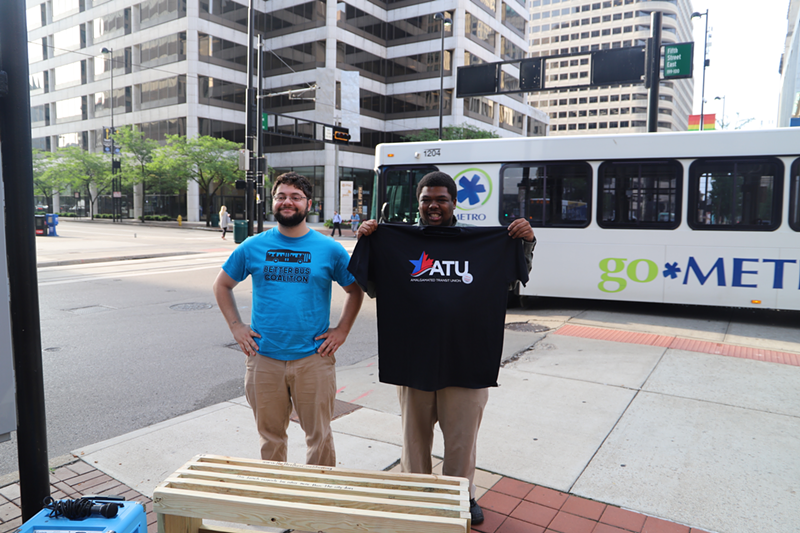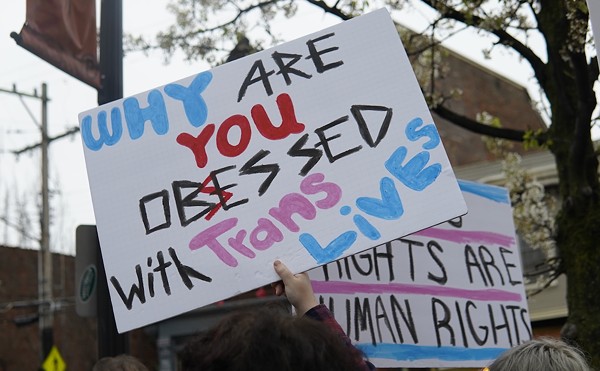
A group of activists pushing for improvements to the region's Metro bus service isn't taking lack of funding for the transit system sitting down. And now, more riders will be able to have a seat thanks to their efforts.
Cincinnati's Better Bus Coalition has been building and placing bus benches at Metro stops that don't have them. The do-it-yourself initiative is just one part of a larger campaign the group is taking on to highlight funding shortfalls for Metro ahead of a potential Hamilton County sales tax levy ask that could end up on the November ballot.
"We have identified, through our research, numerous bus stops that are heavily used where there is no place for anyone to sit," Coalition President Cam Hardy says. "I think of my great grandmother, who rides the bus. There is no place for her to sit after she's grocery shopped all day."
The initiative isn't just about providing a place to sit. Hardy says that it's about providing a welcoming environment for current — and future — Metro riders.
"Not only do we want to put down benches, but we also want to make sure these stops are clean," he says. "The only way that we're going to attract new ridership is if these stops look presentable to people. We're letting people know that there are people out here who care about them."
So far, the group has installed nine benches at stops in Northside, Price Hill and Hyde Park where bus riders previously had to stand. Hardy says the Coalition has received a flood of requests for more benches in places like Lincoln Heights, CUF and Cheviot. The group has also asked bus drivers to provide input on where they're putting the benches.
The materials for each bench costs $30. Better Bus Coalition members Mark Samaan and Hardy help construct the benches at Samaan's wood shop. Initially, the group had money for 10 benches, but Samaan says they've since raised funding for more. The coalition is soliciting sponsorships from donors interested in supporting the effort.
There is more work to do, of course. Much of it will fall to the Southwest Ohio Regional Transit Authority, which must decide whether to put a tax levy on the November ballot, and how much to ask voters to pay. The transit agency must decide between various tax hikes ranging from .5 cents — enough to address coming multi-million dollar budget deficits, but keeping service roughly at status quo — to a 1 cent raise that could dramatically improve transit throughout the region. Last year, during the city's mayoral election, Mayor John Cranley said he supported a .5 cent boost. Others, including Hamilton County Commission President Todd Portune, have called on SORTA to hold off on the levy ask, however.
The levy would mark the first time in decades that Hamilton County has contributed to Metro's funding, which currently comes from Cincinnati's earnings tax. If the levy were to pass, Cincinnati City Council could re-appropriate its spending or cut the earnings tax.
[MORE: Here's what voters would get with a sales tax increase for Metro]
The Cincinnati Charter Committee voted this week to endorse a .9 cent boost. Hardy, who chairs the charter's transportation committee, says that's a good place to be.
"We believe .9 is a really good number," he says. "It's far away from .5, which is where we were last year. We're really working to raise awareness around the fact that .5 won't be enough. We need significant investment and we need it now."
But will county voters really go for a sales tax boost, especially after recent property tax levies for the Public Library of Cincinnati and Hamilton County and other initiatives?
"I'm not going to sit up here and say it's going to be an easy thing," Hardy says. "It will be an uphill battle. You're going to need to convince people who don't use transit. But I think it's extremely doable. The demographics in the county are rapidly changing. We've got more poor and minority people being moved to the suburbs, and those people rely on transit. We have to reach those people."





